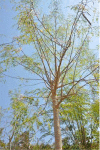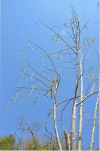Investigation of medicinal plants traditionally used as dietary supplements: A review on Moringa oleifera
- PMID: 30854178
- PMCID: PMC6379786
- DOI: 10.4081/jphia.2018.841
Investigation of medicinal plants traditionally used as dietary supplements: A review on Moringa oleifera
Abstract
Diet and nutrition are important factors in the promotion and maintenance of good health throughout the entire life course. A plant-based diet may be able to prevent and treat chronic diseases such as diabetes, heart disease and hypertension, obesity, chronic inflammation and cancer. Phytonutrient rich foods are found in traditional African diet which is mostly vegetarian, and most of these food plants are often used for medicinal purposes. This review focuses on a peculiar plant Moringa oleifera, called the "Miracle Tree", considered to be one of nature's healthiest and most nutritious foods. Countless studies describe the benefits of Moringa leaves, pods, seeds and flowers. Its well-documented role in prevention and treatment of chronic diseases is hypothesized here as a result of possible of cross-kingdom regulation by exogenous vegetal microRNAs and synergistic action of plant bioactive components on endogenous human microRNA regulation. The potential health impact of phytocomplexes from African dietary plants within the context of cross-kingdom and endogenous microRNA regulation on health improvement and the overall economic well-being of the continent is estimated to be enormous.
Keywords: African diet; Moringa oleifera; chronic diseases; cross-kingdom; medicinal plants.
Conflict of interest statement
Conflict of interest: the authors declare no potential conflict of interest.
Figures
Similar articles
-
Nature's Gold (Moringa Oleifera): Miracle Properties.Cureus. 2022 Jul 7;14(7):e26640. doi: 10.7759/cureus.26640. eCollection 2022 Jul. Cureus. 2022. PMID: 35949760 Free PMC article. Review.
-
Nutritional significance and therapeutic potential of Moringa oleifera: The wonder plant.J Food Biochem. 2021 Oct;45(10):e13933. doi: 10.1111/jfbc.13933. Epub 2021 Sep 17. J Food Biochem. 2021. PMID: 34533234 Review.
-
Do Bioactive Food Compound with Avena sativa L., Linum usitatissimum L. and Glycine max L. Supplementation with Moringa oleifera Lam. Have a Role against Nutritional Disorders? An Overview of the In Vitro and In Vivo Evidence.Nutrients. 2021 Jul 2;13(7):2294. doi: 10.3390/nu13072294. Nutrients. 2021. PMID: 34371804 Free PMC article. Review.
-
Multi-functional application of Moringa oleifera Lam. in nutrition and animal food products: A review.Food Res Int. 2018 Apr;106:317-334. doi: 10.1016/j.foodres.2017.12.079. Epub 2018 Jan 4. Food Res Int. 2018. PMID: 29579932 Review.
-
Moringa oleifera: a food plant with multiple medicinal uses.Phytother Res. 2007 Jan;21(1):17-25. doi: 10.1002/ptr.2023. Phytother Res. 2007. PMID: 17089328 Review.
Cited by
-
Evaluation of antioxidant, anti-inflammatory, anticancer activities and molecular docking of Moringa oleifera seed oil extract against experimental model of Ehrlich ascites carcinoma in Swiss female albino mice.BMC Complement Med Ther. 2023 Dec 14;23(1):457. doi: 10.1186/s12906-023-04279-z. BMC Complement Med Ther. 2023. PMID: 38098043 Free PMC article.
-
Determination of the Dependence of Thermal Diffusivity with Moringa Concentration by Thermal Lens as a Sensitive Experimental Technique.Int J Thermophys. 2020;41(8):105. doi: 10.1007/s10765-020-02685-w. Epub 2020 May 29. Int J Thermophys. 2020. PMID: 32501319 Free PMC article.
-
Monitoring Indian "Superfood" Moringa oleifera Lam. - species-specific PCR-fingerprint-based authentication for more consumer safety.NPJ Sci Food. 2024 Apr 13;8(1):21. doi: 10.1038/s41538-024-00264-z. NPJ Sci Food. 2024. PMID: 38615055 Free PMC article.
-
Moringa oleifera and Blood Pressure: Evidence and Potential Mechanisms.Nutrients. 2025 Apr 3;17(7):1258. doi: 10.3390/nu17071258. Nutrients. 2025. PMID: 40219017 Free PMC article. Review.
-
Nutritive value, biological properties, health benefits and applications of Tetrapleura tetraptera: An updated comprehensive review.Heliyon. 2024 Mar 13;10(6):e27834. doi: 10.1016/j.heliyon.2024.e27834. eCollection 2024 Mar 30. Heliyon. 2024. PMID: 38515660 Free PMC article. Review.
References
-
- Pickford M. Palaeoenvironments and hominoid evolution. Z Morphol Anthropol 2002;83:337-48. - PubMed
-
- National Research Council Policy and Global Affairs Development Security Cooperation Lost Crops of Africa: Volume II Vegetables National Academies Press; 2006.
-
- Harris JB. The Africa Cookbook: Tastes of a Continent. New York: Simon & Schuster; 1998.
-
- Lentz C, ed. Changing Food Habits: Case Studies from Africa, South America, and Europe. Sydney, Australia: Harwood Academic Publishers; 1999.
-
- Fiple KF, Ornelas KC, eds. The Cambridge World History of Food, Volumes. 1 and 2. Cambridge, UK: Cambridge University Press; 2000.
LinkOut - more resources
Full Text Sources






